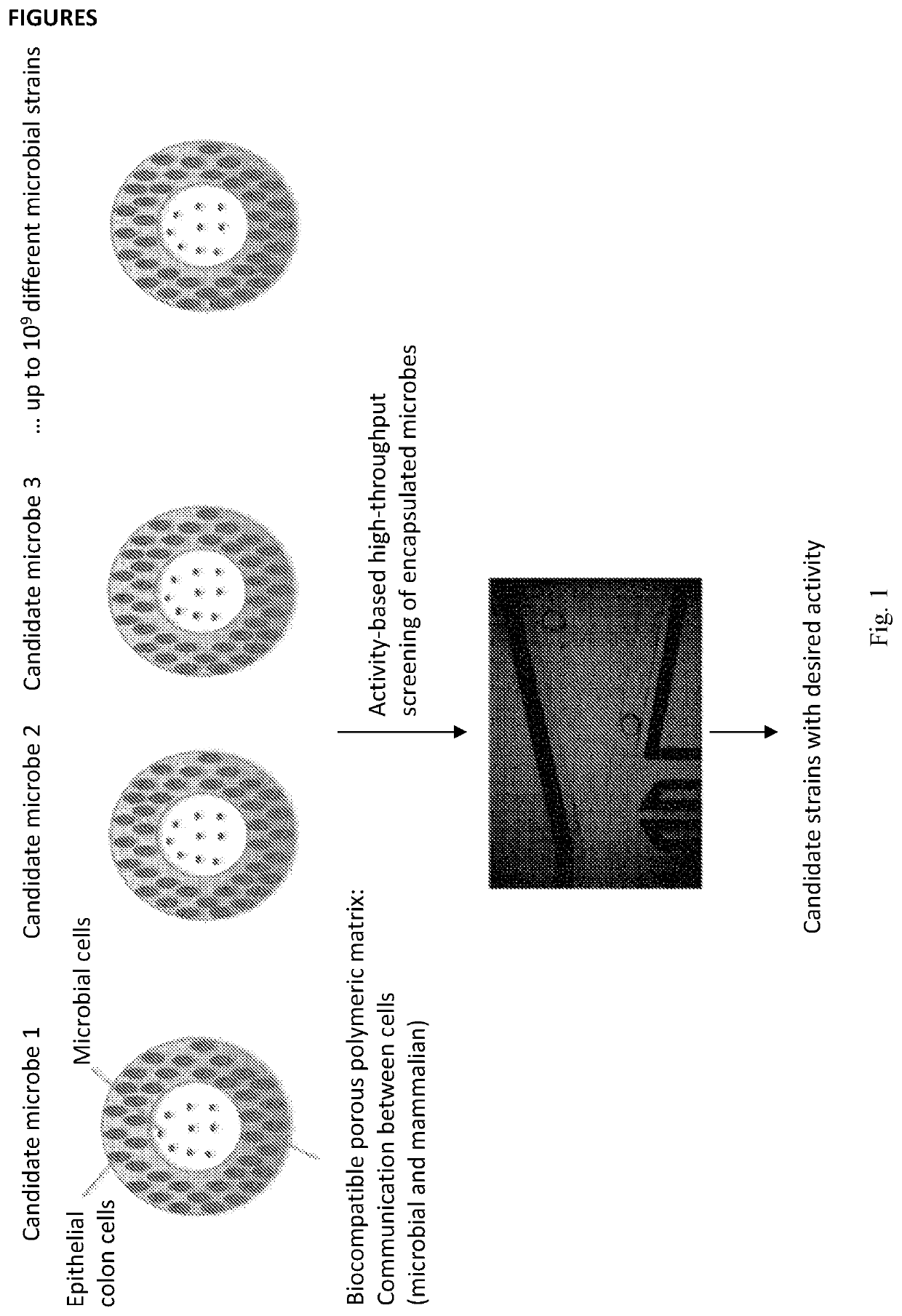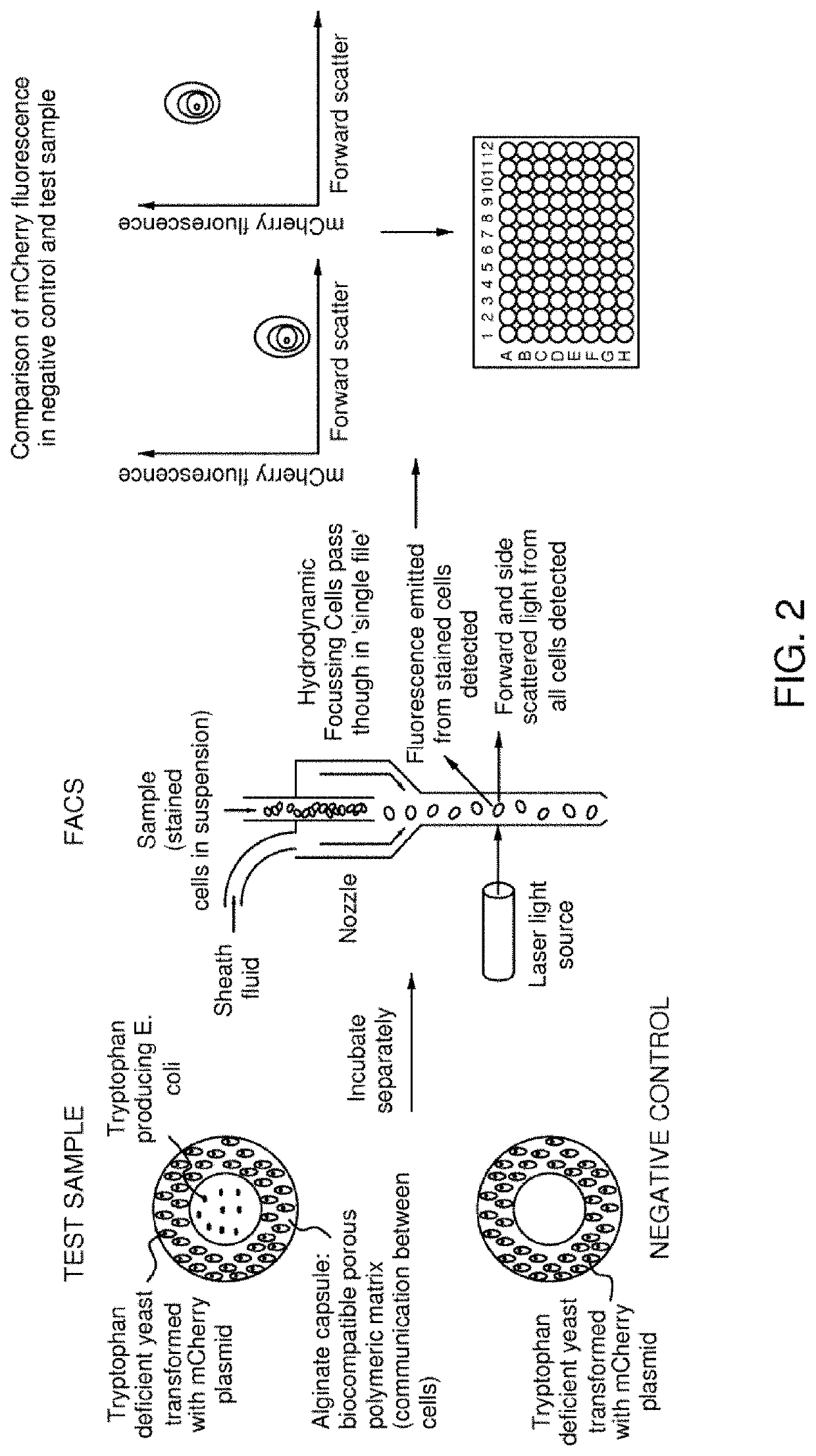Microparticle for cultivating and testing cells
a microparticle and cell technology, applied in the cell field, can solve the problems of difficult testing of the effects of already isolated bacterial strains, inherently difficult to isolate and test the potential beneficial microbes out of the huge diversity of microorganisms contained in natural samples, and insufficient testing
- Summary
- Abstract
- Description
- Claims
- Application Information
AI Technical Summary
Benefits of technology
Problems solved by technology
Method used
Image
Examples
examples
[0089]A strain of Escherichia coli (e.g. MG1655) is transformed with a plasmid (named here pTrp) containing the trpABCDE operon under the control of a strong constitutive promoter. The E. coli strain harboring pTrp is able to overproduce L-tryptophan and secrete the amino acid to its surrounding, hereafter referred to as the “producer” strain.
[0090]A strain of Saccharomyces cervisiae that is auxotrophic for L-tryptophan and Histidine (e.g. YFL040W) is transformed with a plasmid (named here as pFluor) containing the coding sequence of a fluorescent protein (e.g. GFP, eGFP, mCherry, RFP) under the control of a strong constitutive promoter (PTEF1) as well as the gene or gene operon that allows for intracellular production of histidine. Such complementation of the histidine auxotroph allows for positive selection of S. cervisiae harbouring the pFluor plasmid. When cultured in the presence of L-tryptophan but in the absence of Histidine, the auxotrophic Saccharomyces cervisiae strain har...
PUM
| Property | Measurement | Unit |
|---|---|---|
| time | aaaaa | aaaaa |
| diameter | aaaaa | aaaaa |
| diameter | aaaaa | aaaaa |
Abstract
Description
Claims
Application Information
 Login to View More
Login to View More - R&D
- Intellectual Property
- Life Sciences
- Materials
- Tech Scout
- Unparalleled Data Quality
- Higher Quality Content
- 60% Fewer Hallucinations
Browse by: Latest US Patents, China's latest patents, Technical Efficacy Thesaurus, Application Domain, Technology Topic, Popular Technical Reports.
© 2025 PatSnap. All rights reserved.Legal|Privacy policy|Modern Slavery Act Transparency Statement|Sitemap|About US| Contact US: help@patsnap.com


